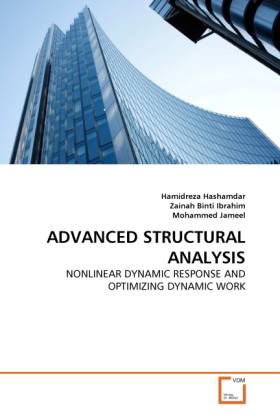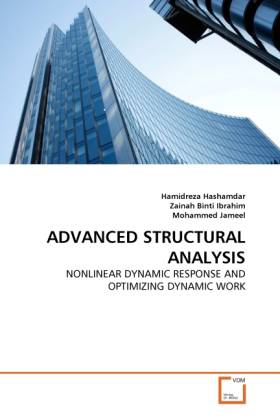
- Afhalen na 1 uur in een winkel met voorraad
- Gratis thuislevering in België vanaf € 30
- Ruim aanbod met 7 miljoen producten
- Afhalen na 1 uur in een winkel met voorraad
- Gratis thuislevering in België vanaf € 30
- Ruim aanbod met 7 miljoen producten
Zoeken
Advanced Structural Analysis
NONLINEAR DYNAMIC RESPONSE AND OPTIMIZING DYNAMIC WORK
Hamidreza Hashamdar, Zainah Binti Ibrahim, Mohammed Jameel
Paperback | Engels
€ 48,45
+ 96 punten
Omschrijving
The objective of this book is to review the methods most commonly used to predict the dynamic response of discrete non-linear structural systems. Several methods are available for the dynamic response analysis of the linear structure. Of these the mode-superposition method is best known and most commonly used. The method can be extended to the non-linear analysis. The regarding the fact, the non-linear systems have no fixed sets of eigenvectors and eigenvalues. The new sets of eigenvectors and eigenvalues must be calculated each time step and the stiffness matrix must be re valuated at end of each time step. This makes the use of the mode-superposition method extensively time consuming and costly. the dynamic response analysis of non-linear system is based on the evaluation of the response for a series of short time intervals using different types of time integration techniques.
Specificaties
Betrokkenen
- Auteur(s):
- Uitgeverij:
Inhoud
- Aantal bladzijden:
- 80
- Taal:
- Engels
Eigenschappen
- Productcode (EAN):
- 9783639361995
- Verschijningsdatum:
- 7/06/2011
- Uitvoering:
- Paperback
- Formaat:
- Trade paperback (VS)
- Afmetingen:
- 152 mm x 229 mm
- Gewicht:
- 127 g

Alleen bij Standaard Boekhandel
+ 96 punten op je klantenkaart van Standaard Boekhandel
Beoordelingen
We publiceren alleen reviews die voldoen aan de voorwaarden voor reviews. Bekijk onze voorwaarden voor reviews.











